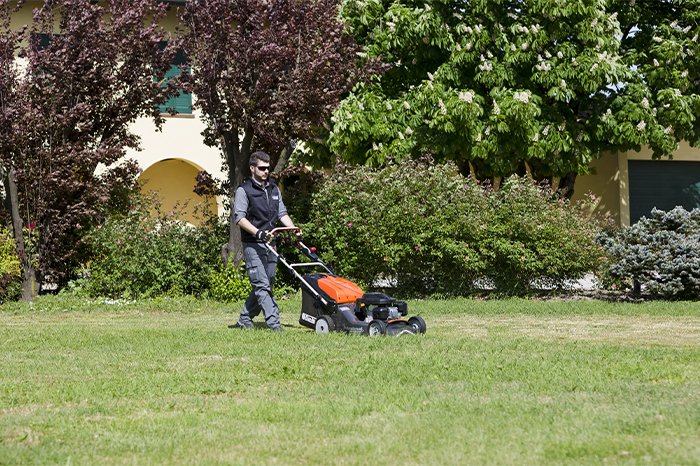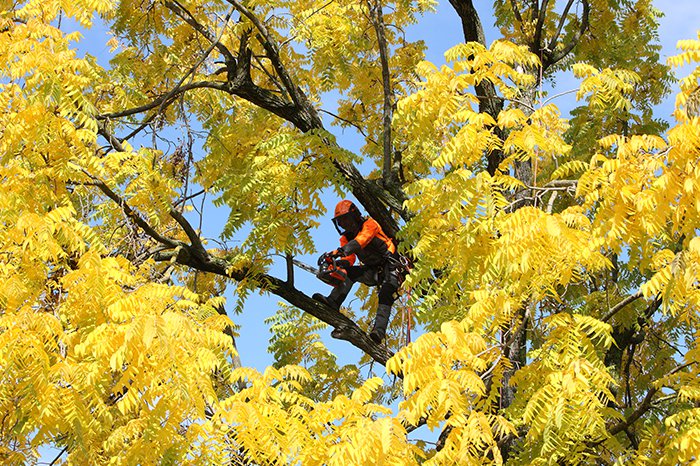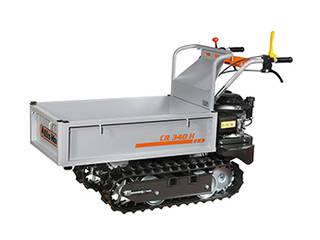The English garden is the polar opposite of the formal gardens typically found in France or Italy. Formal gardens are based on geometric shapes, symmetrical layouts, the use of perspective, topiary and sculpted flower beds. In short, they represent humankind’s dominance and control over nature.
All this changed in Great Britain at the end of the 17th century, thanks to a renewed influx of cultural influences—encompassing philosophy, science and art—and the country’s age-old political rivalry with France. The popularity of English gardens subsequently spread to mainland Europe including Italy, where they became well established, and eventually to North America.
In this article we describe the characteristic features of an English-style garden, before explaining how to make an updated, contemporary version.
The English garden or landscape garden
The English garden (also called landscape, picturesque or romantic garden) is characterised by naturalness, variety, elements of surprise, and continuity with the surrounding landscape. According to the aesthetics of the English garden, the beauty and perfection of nature lies in its spontaneity, freedom, wildness, luxuriance and magnificence, and an English garden should seek to imitate this, without obvious signs of human intervention. So in essence the English garden is artificially natural, with only superficial differences compared with formal gardens.
Traditionally, the characteristic elements of the English-style garden were rolling green slopes; tall trees dotted about single or in clumps; bushes not pruned into geometric shapes, and groups of flowering plants; water features (ponds, streams etc.); winding paths amidst the greenery; inanimate elements such as artificial rocks and caves, recreations of ancient ruins, small buildings in classical style or with an exotic flavour; and "invisible" fences that seem to fade into the surrounding countryside.
English gardens were therefore meticulously designed to give the impression of being a natural environment where everything was irregular, haphazard and full of contrasts (meadow/forest, natural/artificial features etc.). The succession of views and perspectives was also carefully planned so that they were revealed gradually while walking around or looking out of windows, eliciting a sense of awe and wonder. In Italian and French gardens, nature was merely a backdrop for court parties, whereas in English gardens the landscape dominated and people were nothing more than (accidental) spectators.
Before you start arranging your English lawn garden, we advise you to design it first. That will help to clarify your ideas and reconcile them to the context and available space, so as to avoid unexpected setbacks as much as possible, both during the works and afterwards:
-
Measure the area so that you can draft a scale drawing to work from.
-
Evaluate the existing conditions: climate, soil type, sun exposure, contours of the terrain, neighbouring areas etc.
-
Put your must-have requirements down on paper.
-
Start with a rough design that divides up the available space into different functional areas (entertaining/relaxation, children's play area, vegetable patch, parking space etc.). Then, specify in greater detail the general organisation of the garden: where to situate the lawn, trees and hedges (according to their intended purpose, such as shade, privacy, or to mark a boundary), relaxation areas, paths, water features, lighting, irrigation system and so on. If applicable, consider how to integrate existing vegetation that you want to retain. Starting from the characteristic elements of an English garden, see if you can adapt them to fit your needs, available space and, last but not least, spare time and budget.
-
Finally, work out final details of the design by deciding on plants, the type of grass for the lawn, materials, inanimate elements and so on. When it comes to the plants, pay close attention to which ones you choose. In particular, think about how much space trees and shrubs will need. Otherwise, you risk creating an overcrowded and chaotic environment — and too much spontaneity is not a good thing in an English garden!
Once the design is finished, it’s time to start building your English garden. You can alleviate the workload by using a transporter to effortlessly haul plants, construction materials, furnishings, tools and gardening products. When should you start the building work? For anything to do with planting and lawn seeding, autumn is the best season.


How to create your own English lawn garden
As you may have inferred from our historical overview, English gardens used to take up acres of space, as they were associated with the large country estates of wealthy landowners. Nowadays, we can take that as a source of inspiration and recreate them in miniature (by replacing woodland with a patch of shrubs, for example).
So, let's recap the characteristic elements of the English-style garden and give them a contemporary twist. First and foremost, you can’t do without a lawn, but intersperse it with foliage to provide contrast. To achieve a green lawn with a uniform appearance, carefully choose the type of grass based on the climate in your area. The grass traditionally used for English lawns is unsuitable for the climate here in Italy (which is prone to heat waves and drought). In such climates, you are better off opting for a rustic lawn consisting of Bermuda grass, for example, which is hardier and less laborious to maintain, but which replicates the typically uniform, lush appearance of an English lawn. To make your own English lawn, you can sow grass seeds or lay rolled turf.
Although the presence of weeds could contribute to the "naturalness" of your English garden, here you will find an overview of the different methods for eliminating weeds, including early grass mowing with a lawnmower or wheeled brushcutter. Cutting the lawn as well as scarifying it will help to keep it healthy and therefore beautiful.
In a contemporary English garden, small lakes, streams, waterfalls and the like can be substituted with a garden pond having a curved, non-geometric shape, which will make it look more natural and easier to install. You can build one easily by digging a hole in the ground and lining it with a plastic sheet; to fill it you can use a water pump (which will also come in handy for watering the garden).
Paths, which are rarely straight or symmetrical, are not just for conveniently moving around your English garden and for linking it to the house, but also for surrounding yourself among vegetation, framing a scene or leading you to a surprise (it’s not only unexpected shapes and colours that can be surprising, but also intoxicating flowery scents).
Vegetation should also be chosen according to the climate, terrain, available space and sun exposure, as well individual taste. You can plant rose bushes, shrubs (including flowering and aromatic shrubs) and mixed hedges. Use herbaceous perennials to create flower beds and borders (with a view to accentuating paths or demarcating different areas, although preferably not too conspicuously). Climbing plants are also very suitable for an English garden (here are some instructions for building a useful DIY trellis). Select the plants so that your garden has something beautiful to offer in every season: from this point of view it makes sense to opt for evergreen trees, shrubs and climbers.
As you know, the natural appearance of an English garden is the result of meticulous planning, which must go hand in hand with equally careful maintenance. Plants should be fertilised, watered, protected from the cold, pruned and so on. Here is a rundown of the gardening jobs you need to do in the winter and summer. If you opt for deciduous plants, remember to tidy the lawn so as to keep it healthy (this is a typical autumn job).
For winter and summer pruning you can use a pruning chainsaw, telescopic pruner (wear appropriate protective clothing when using them) or simple manual tools such as pruning shears and loppers.
Instead of classical ruins and temples, you can adorn your English garden with a pergola partially concealed by impressive-looking climbers such as wisteria, Bougainvillea or jasmine, and use it as a relaxation or dining area. You can situate others focal points so that they are half-hidden in greenery and only visible as you explore the garden: examples include a bench, a table and chairs or a large plant pot.









